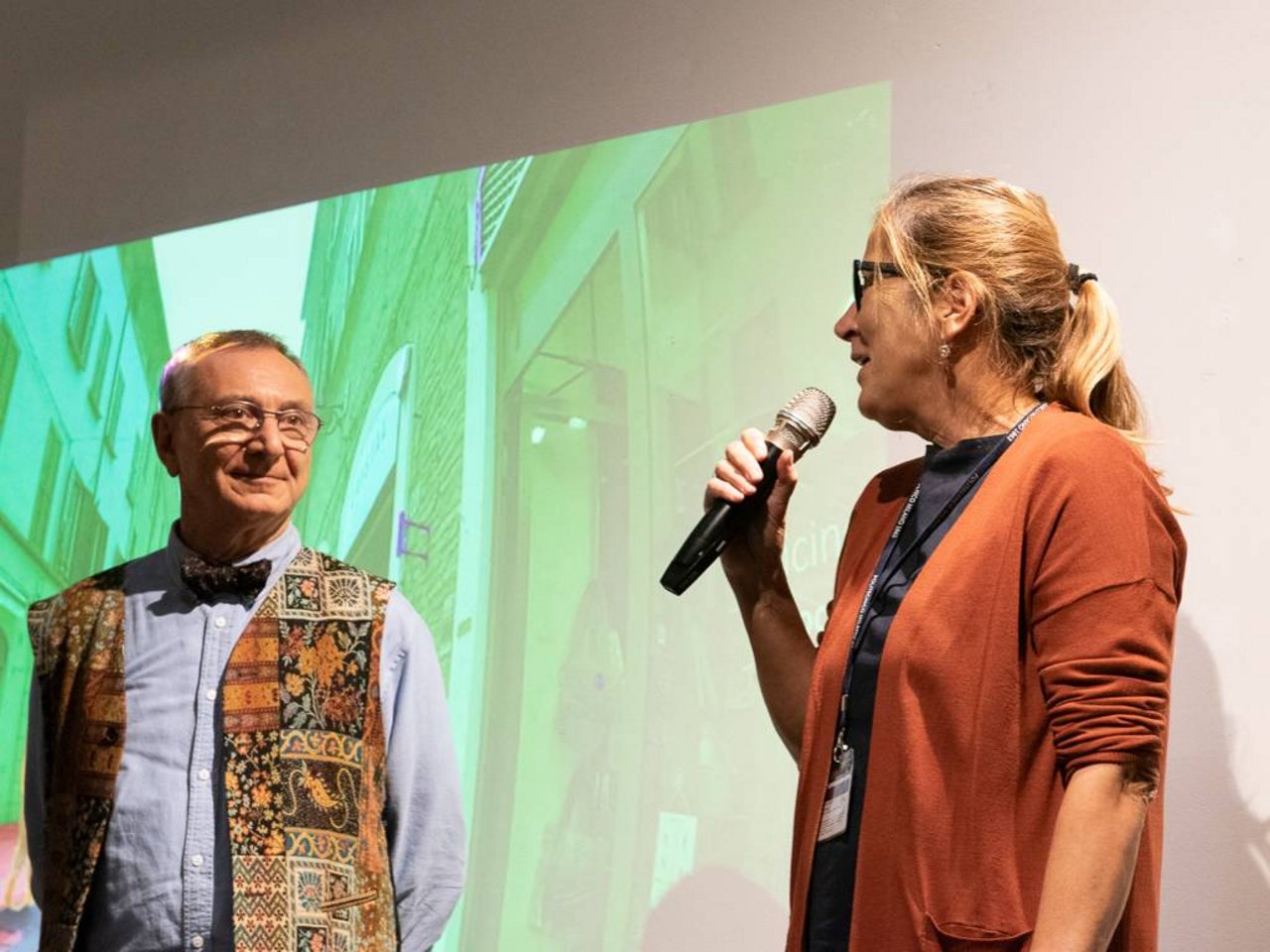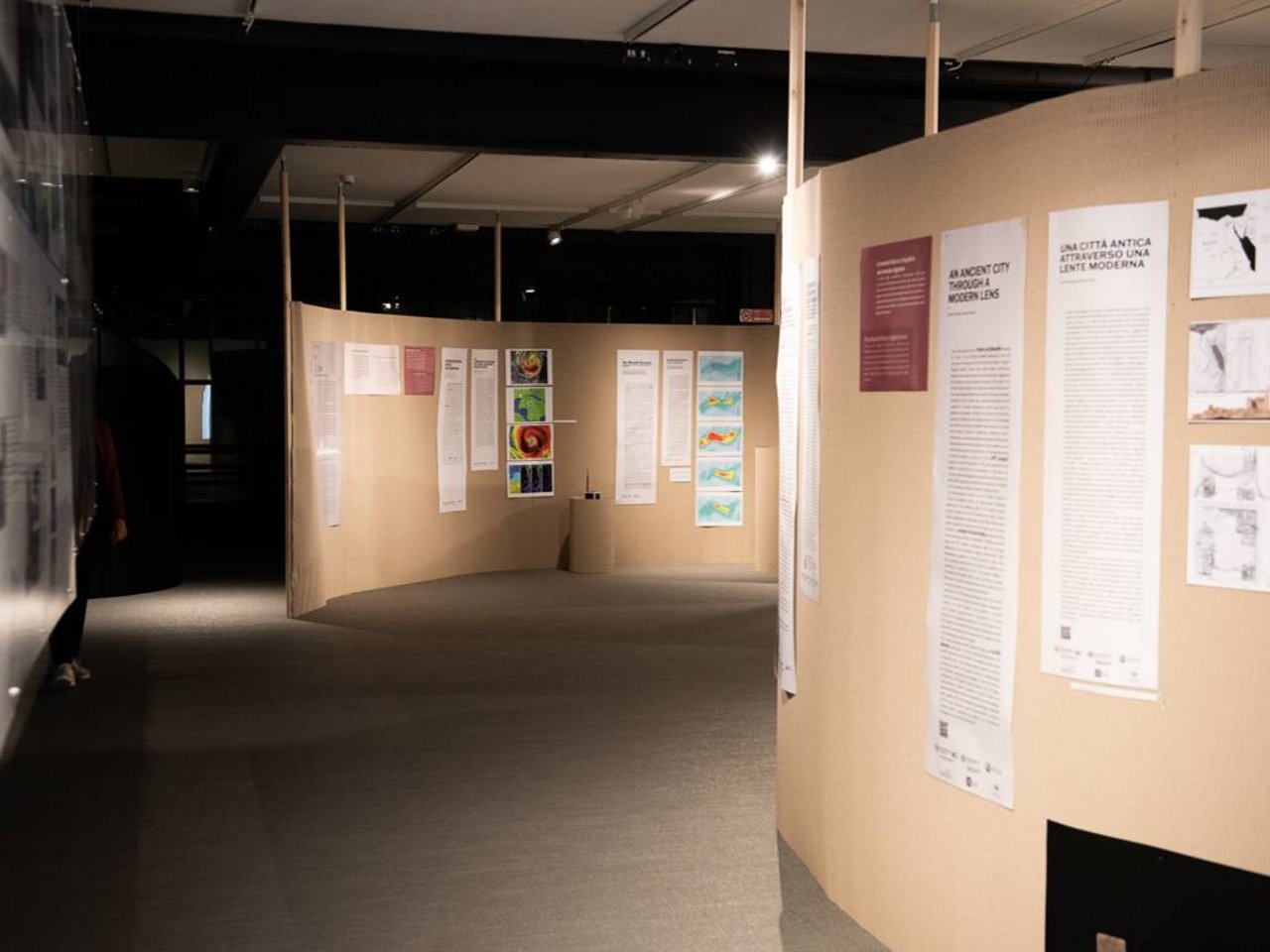X-Cities – Extended Cities between virtual and physical scapes
30.10.2023 - 12.1.2024
If I tell you that the city to which my journey tends is discontinuous in space and time, now more sparse, now more dense, you must not believe that you can stop looking for it.
The Invisible Cities, Italo Calvino
What kind of world will we live in in the near future? How will our cities change due to a new perception of physical and digital space?
The X-Cities exhibition investigates the advances in research and technologies currently in constructing the identity of 'extended cities', i.e. a new environment born from the hybridisation of physical and digital space.
The rapid digital revolution is changing our lives. It is changing our behaviour and styles, increasingly dependent on pervasive communication technologies; it is radically changing our relationship with physical space, mediated by digital, from a perceptual and relational point of view.
The impacts of the digital era on the city and society are such that they can change the processes of designing, managing and reading space. Through the exhibition, we will explore the emergence of a new relationship between man and the environment and between the environment and man mediated by the digital.
X-cities allow us to observe projects of digitisation of the existing, but also monitor its functioning, whether urban or architectural, as well as of greenery or glaciers or the activities carried out by man in space.
Along an initial trajectory of digitisation of the physical world, digital replicas of existing buildings are presented, models of buildings that no longer exist or that we wish existed optimised as intelligent machines equipped with sensors. Narratives, photos and videos introduce us to the concepts of digital aliases, immaterial worlds where avatars with human likenesses narrate distant realities under the lens of research.
In a second trajectory that focuses on the materialisation of the digital world, we will instead discover that there is no digital world without an explicit reference to the physical world, as demonstrated by the creation of an immersive internet based on several shared virtual worlds, worlds in which everyone must equip themselves with a new digital identity. We will also discover the physical signs that this world leaves on the territory, the maps of the data networks that crisscross our country as the first tools we begin to use to move away as a physical entity from recognition and tracking in the digital.
Two large concept maps in the exhibition tell us the evolution of the process into the state we are in today.
A human-robot interaction laboratory in a physical/virtual environment provides interaction experiences for all audiences.
The exhibition realised according to sustainable principles, is equipped with written narratives, videos, and storytelling avatars and is suitable for a diverse audience.
The exhibition, realised according to sustainability principles, features written narratives, videos, stories, and narrating avatars and is suitable for a diverse audience.
Credits
Curators:
Cecilia Bolognesi, Department of Architecture, Building Engineering and the Built Environment, Politecnico di Milano
Eugenio Morello, Department of Architecture and Urban Studies, Politecnico di Milano
Pier Luca Lanzi, Department of Electronics Informatics and Bioengineering, Politecnico di Milano
Promoters:
Andrea Campioli, Dean School of Urban Architecture and Construction Engineering, Politecnico di Milano
Simona Chiodo and Davide Ponzini - Culture and Events Working Group, School of Urban Architecture and Construction Engineering, Politecnico di Milano
Cycle of Research Seminars
The exhibition will be accompanied by a series of seminars to explore salient themes of the extended city.


























